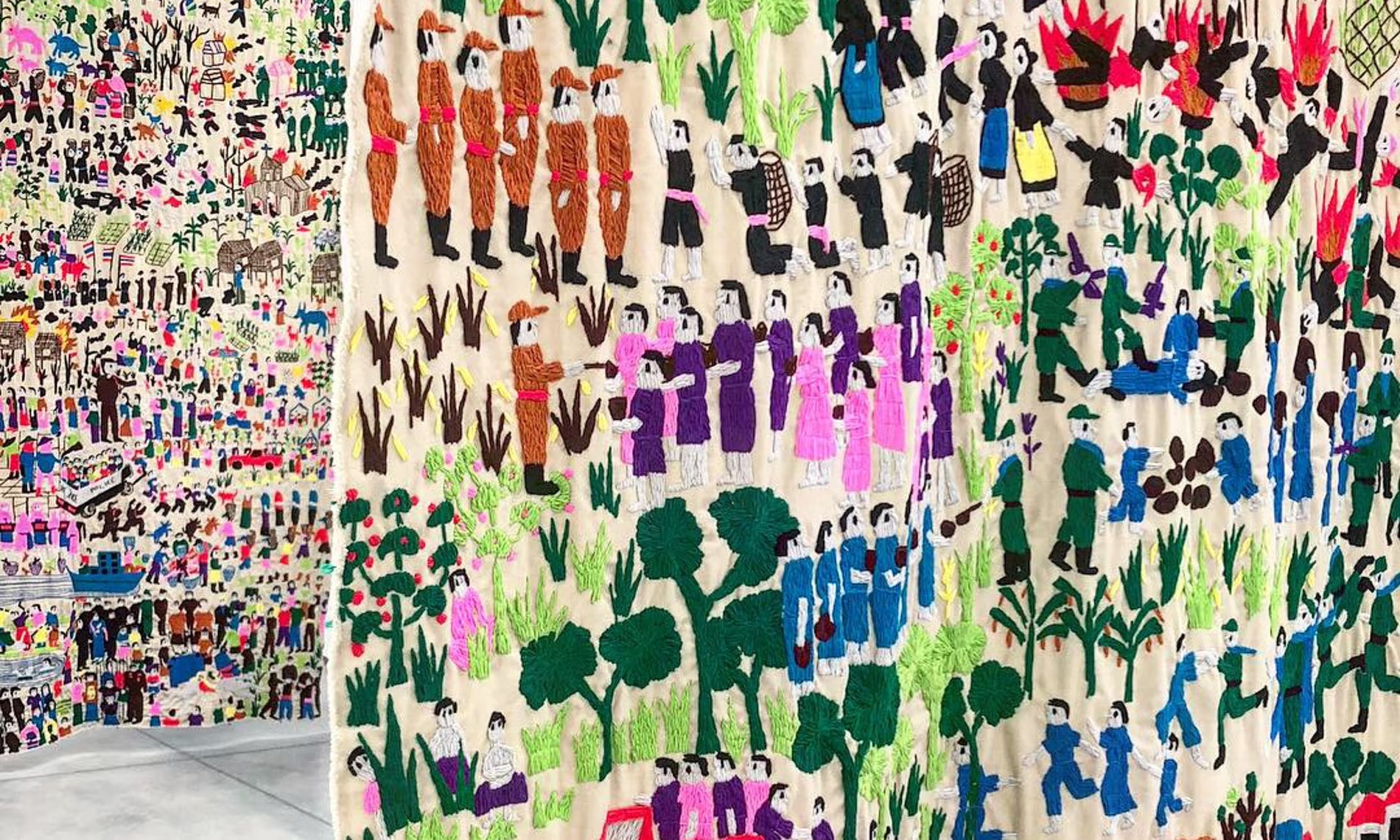The result is a combination of intricately stitched, colourful pieces of fabric often featuring cartoonish images that are put together by Siributr in an installation entitled There’s No Place, which is on show at the Venice Biennale.
“I had no idea that these Shan refugees existed,” Siributr says. “The Koung Jor village is considered a refugee camp and happens to be on the temple grounds. It is on the Thai side of the border, and the border itself is just steps away, so people can still travel in and out.”
Koung Jor (“Happy Hill”) has more than 400 inhabitants and is one of six camps on the Thai-Myanmar border, altogether hosting more than 6,000 Shan people, which were set up in 2002 after violence in Myanmar’s Shan state forced people to flee. Thailand, which is not a signatory to the 1951 UN refugee convention, does not recognise them as asylum seekers, so most of them are stateless.
Siributr’s installation at Palazzo Smith Mangilli Valmarana in Venice is part of The Spirits of Maritime Crossing – an exhibition of south-east Asian art exploring themes of diaspora and displacement and presented by the Bangkok Art Biennale Foundation. On until late November, the exhibition takes place ahead of the Bangkok biennale, which runs from October to February.
Siributr says unfinished embroidered patches from Koung Jor were taken to a 2020 exhibition in Singapore, where members of the public “filled in what was not finished, some adding images, some words”.






